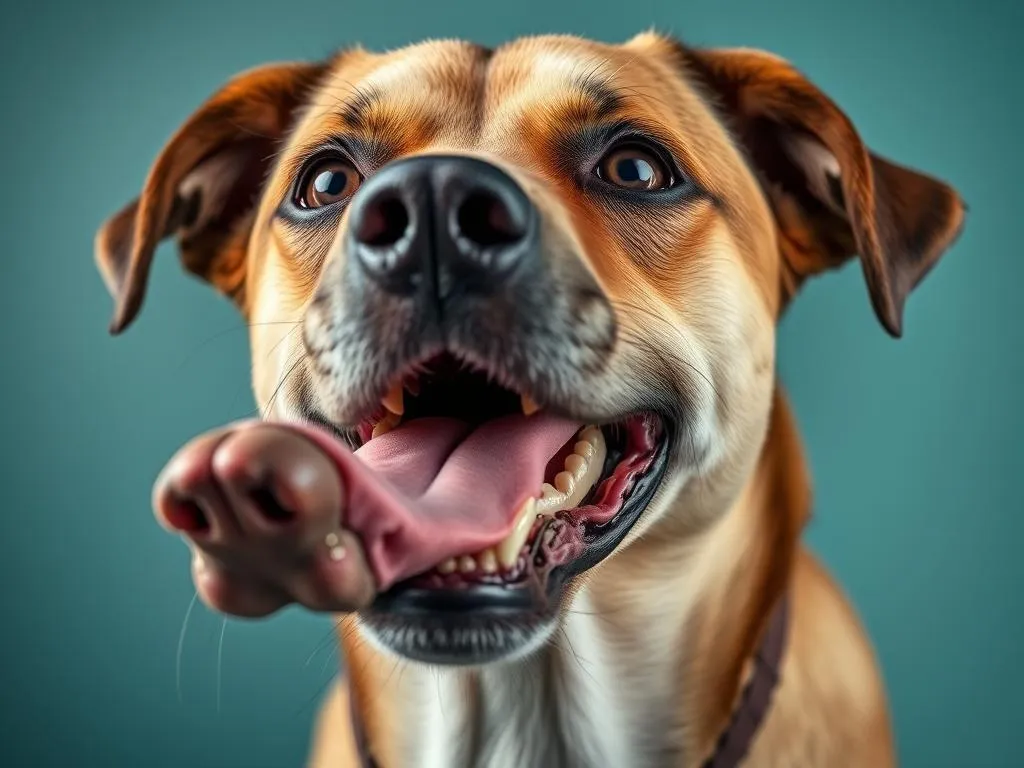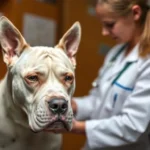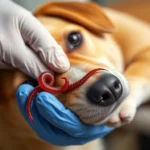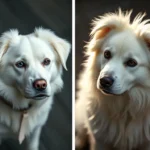
Introduction
Malocclusion in dogs refers to the misalignment of teeth and jaws, which can lead to various dental issues and discomfort for our furry companions. Maintaining your pet’s dental health is crucial, as poor oral hygiene can result in pain, difficulty eating, and other health complications. In this article, we will delve into the intricacies of malocclusion in dogs, discussing its causes, symptoms, and available treatments. Veterinary professionals play a vital role in diagnosing and addressing this condition, ensuring that your pet receives the care they need.
Understanding Malocclusion
What is Malocclusion?
Malocclusion is a term used to describe the improper alignment of teeth when a dog’s mouth is closed. It can result in various dental problems that may affect your pet’s overall well-being. There are three main types of malocclusion:
- Class I: This is characterized by a normal bite but with some teeth misaligned.
- Class II: This type, also known as “overbite,” occurs when the upper jaw is significantly longer than the lower jaw, causing the upper teeth to protrude over the lower ones.
- Class III: Also referred to as “underbite,” this occurs when the lower jaw is longer than the upper jaw, resulting in the lower teeth overlapping the upper teeth.
Certain dog breeds are more prone to malocclusion, particularly those with brachycephalic (flat-faced) features, such as Bulldogs, Pugs, and Shih Tzus. These breeds often exhibit dental crowding and misalignment due to their unique jaw structure.
Causes of Malocclusion
Understanding the causes of malocclusion is essential for prevention and treatment. The primary factors contributing to this condition include:
- Genetic Factors: Many instances of malocclusion are inherited, making certain breeds more susceptible.
- Environmental Influences: Diet and chewing habits can play a significant role. Dogs that chew on hard objects or have an unbalanced diet may develop dental issues over time.
- Injuries or Trauma: Accidents can lead to broken or misaligned teeth, contributing to malocclusion.
Symptoms of Malocclusion
Recognizing the symptoms of malocclusion in dogs is crucial for early intervention. Common signs include:
- Visible Signs: Misaligned teeth, gaps, or overlapping teeth may be apparent when your dog’s mouth is closed.
- Difficulty Eating: Dogs with malocclusion may struggle to chew food properly, leading to weight loss or reluctance to eat.
- Behavioral Changes: Excessive drooling, pawing at the mouth, or avoiding chewing can indicate discomfort associated with misaligned teeth.
Early detection is vital in preventing further complications. If you notice any of these symptoms, it’s essential to consult a veterinary professional.
The Role of Veterinary Professionals
When to Consult a Vet
Regular check-ups with a veterinarian are crucial for maintaining your dog’s dental health. Schedule a visit if you observe any signs of malocclusion, such as difficulty eating, noticeable dental misalignment, or behavioral changes. Additionally, routine dental check-ups should be part of your pet’s annual health care plan, as many dental issues can be addressed before they become severe.
Diagnostic Procedures
Veterinary professionals utilize various diagnostic tools to evaluate malocclusion in dogs. These may include:
- Physical Examination: A thorough oral exam enables the vet to assess the position and condition of the teeth and gums.
- Dental X-rays: X-rays provide a detailed view of the tooth roots and underlying structures, helping to identify issues not visible during a physical exam.
- Other Diagnostic Tools: Advanced methods, such as oral cameras, may be used to get a closer look at your dog’s dental condition.
Treatment Options for Malocclusion
Non-Surgical Treatments
For some cases of malocclusion, non-surgical interventions can be effective:
- Dental Cleanings: Regular professional cleanings help maintain oral hygiene and can prevent further dental issues.
- Orthodontic Appliances: Similar to braces for humans, these devices can guide tooth movement and alignment over time.
- Regular Monitoring: If malocclusion is detected early, continuous monitoring may be sufficient to manage the condition without immediate intervention.
Surgical Treatments
In more severe cases, surgical options may be necessary. Indications for surgery include:
- Severe Misalignment: When misalignment affects your dog’s ability to eat or causes pain.
- Tooth Extraction: If a tooth is severely misaligned or damaged, removal may be the best option.
- Jaw Realignment: Surgical procedures may be performed to correct jaw positioning, allowing for better alignment of teeth.
Post-surgery care is critical for recovery. Follow your veterinarian’s instructions regarding pain management, diet, and activity restrictions to ensure your dog’s healing process goes smoothly.
Preventive Care
Importance of Regular Dental Check-ups
Regular dental check-ups are essential for preventing malocclusion and other dental issues in dogs. It’s generally recommended to schedule these visits at least once a year. During a dental check-up, the veterinarian will:
- Conduct a thorough oral examination.
- Educate you about your dog’s specific dental needs.
- Recommend appropriate dental hygiene practices tailored to your pet.
At-Home Dental Care
In addition to professional care, at-home dental hygiene plays a crucial role in maintaining your dog’s oral health. Here are some effective strategies:
- Brushing Techniques and Products: Use a toothbrush and toothpaste specifically designed for dogs. Aim to brush your dog’s teeth at least two to three times a week.
- Dental Chews and Treats: Many products are designed to help reduce plaque and tartar buildup while providing a tasty treat for your dog.
- Diet Considerations: Feeding your dog a balanced diet that promotes dental health can make a significant difference. Look for kibble designed to support oral hygiene.
FAQs About Malocclusion in Dogs
What are the common questions pet owners may have?
-
Can malocclusion be hereditary?
Yes, malocclusion is often inherited, especially in certain breeds. -
How can I tell if my dog has malocclusion?
Look for signs such as misaligned teeth, difficulty eating, or changes in eating behavior. -
Is malocclusion painful for dogs?
Yes, misaligned teeth can cause discomfort and pain, leading to behavioral changes. -
Can malocclusion be treated?
Yes, treatment options range from non-surgical interventions to surgical procedures depending on the severity. -
How often should I take my dog for dental check-ups?
It’s recommended to take your dog for dental check-ups at least once a year, or more frequently if advised by your vet.
Expert Answers to Alleviate Concerns
Veterinary professionals are the best source of information regarding your dog’s dental health. If you have concerns about malocclusion or any dental issues, consult with your vet for personalized advice and treatment options.
Conclusion
Addressing malocclusion in dogs is essential for ensuring your pet’s overall health and well-being. Early intervention, regular dental care, and awareness of potential symptoms can make a significant difference in your dog’s quality of life. By prioritizing dental health and maintaining routine veterinary visits, you can help your furry friend maintain a healthy smile for years to come.









